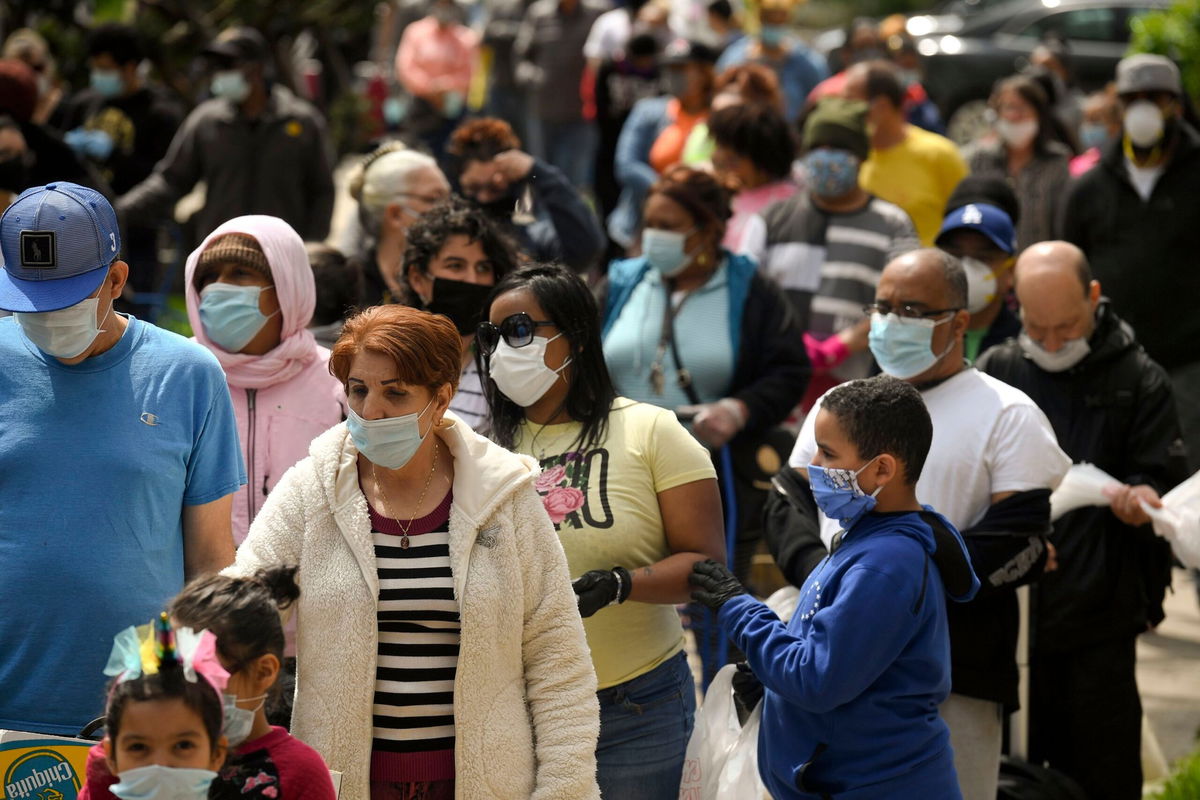Mysterious Covid-19 lineages in US sewers could offer clues to chronic infections

People wait their turn to get food at the Hope Rescue Mission in Reading
By Deidre McPhillips, CNN
(CNN) — As Covid-19 testing and other coronavirus tracking efforts peter out in the United States, wastewater surveillance has become the primary method to monitor early community spread of the virus. And there’s some evidence that close investigation of the findings could also help unravel some of the mysteries of long Covid.
Genetic sequencing of wastewater samples from sewer systems across the country has uncovered dozens of unique strains of the coronavirus, with multiple mutations in unusual combinations.
One possible explanation for these “cryptic lineages” is that they can be traced back to people who have been living with a chronic – and serious – Covid-19 infection for years.
In a recent preprint study, about two dozen researchers set out to understand the origin of these cryptic lineages by closely examining the evolution of one from Wisconsin. The lineage was linked to a single facility that served 30 people and was persistently present for more than a year. Additional data has told similar stories.
These individuals would be shedding at least a thousand times more virus than an average patient does, said Dr. Marc Johnson, a molecular biologist at the University of Missouri and co-author of that research.
Using publicly available data on wastewater monitoring, Johnson has identified 37 of these cases in the US – but says there could be many more.
“The fact that someone can have this kind of infection and there’s every indication that they are still an active member of society and not just lying in the hospital – it’s just amazing,” he said.
The US Centers for Disease Control and Prevention has been following these developments closely but has not been directly involved in the work, said Amy Kirby, program lead for the CDC’s National Wastewater Surveillance System.
Right now, the cryptic lineages do not pose a public health threat, she said.
“The signal we really look for is specific variants increasing in frequency in a community, because that’s what happens at the beginning of a variant surge,” Kirby said. “And it’s not what we’re seeing with these cryptic lineages.”
Johnson’s research has led him to the conclusion that humans are the primary explanation for the cryptic lineages.
For Kirby, some questions remain. Wastewater surveillance is inherently messy, and lots of factors can interfere with interpretation of the data, she said. These unique instances could be from people with long Covid, or they could be from an infected animal whose waste made it into the system.
The only way to know for sure is to directly link the genetic sequence from a clinical test to the wastewater sample.
“Best-case scenario is you find the person, they have long Covid but had no idea they had this infection, and you get them with a doctor who can get them on medicines that will actually give their immune system a bit of an upper hand, and they get better,” Johnson said.
“But we only know about the ones we can find, and we don’t know what the implications are, because we still don’t know who those people are.”
Finding these people can help them get the medical attention they need and perhaps help researchers learn more about long Covid – but it will take coordinated public health messaging in local communities to raise awareness, as well as openness from members of those communities.
“Part of the power of wastewater surveillance is that it is inherently anonymous. It’s a community-level surveillance method. And so tracking back through the wastewater system to identify a person is not what the system is intended for,” Kirby said.
Johnson agrees and is clear that it’s not something that should be routinely chased.
With most of these cases, there is enough data to focus the search for a cryptic lineage within a specific population, but the decision to pursue an individual must be left to public health officials, he said.
One lineage has been identified in two nearby watersheds in Ohio for about two years: regularly in the southern part of Columbus and less often in the town of Washington Court House, about an hour away by car. Johnson’s theory is that this person could live in one county and commute to work in the other.
The signal has grown over time, and the town of Washington Court House had the highest levels of virus yet recorded in its wastewater last month.
Local health officials in Ohio told CNN that the cryptic lineage does not pose a public health threat and they are not actively working to address it at this time.
Johnson says that people with chronic infections that could be behind these cryptic lineages might have unexplained symptoms. “Don’t just assume that it’s just a regular old case of diarrhea,” he said. “It could be something else.”
“There is almost zero chance the patient in Ohio knew about their infection. There is almost zero chance their doctor would figure it out. It is very likely the infection is causing long term damage,” Johnson tweeted. “I’m glad that there is a chance now that they might get appropriate care.”
The-CNN-Wire
™ & © 2023 Cable News Network, Inc., a Warner Bros. Discovery Company. All rights reserved.